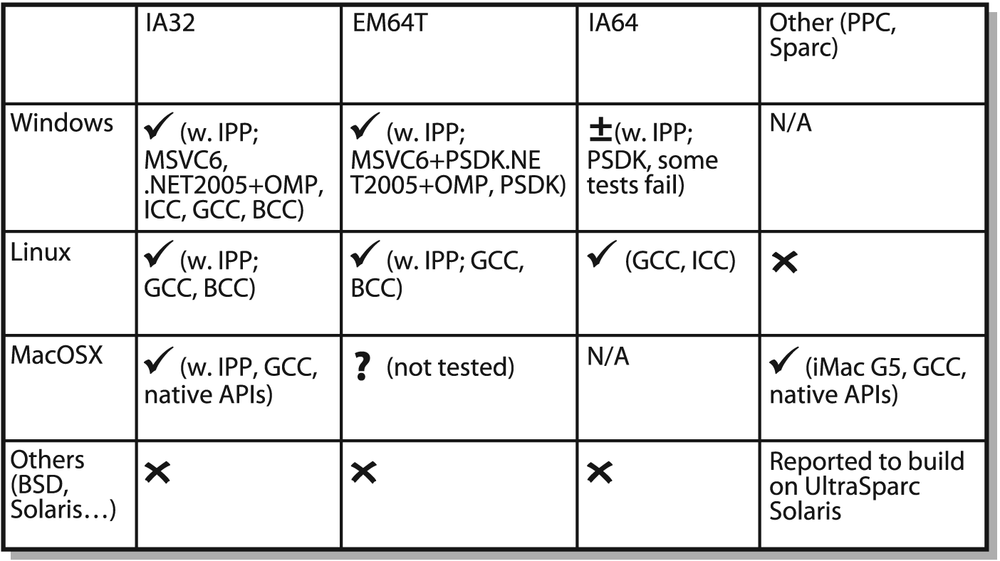OpenCV was designed to be portable. It was originally written to compile across Borland C++, MSVC++, and the Intel compilers. This meant that the C and C++ code had to be fairly standard in order to make cross-platform support easier. Figure 1-6 shows the platforms on which OpenCV is known to run. Support for 32-bit Intel architecture (IA32) on Windows is the most mature, followed by Linux on the same architecture. Mac OS X portability became a priority only after Apple started using Intel processors. (The OS X port isn't as mature as the Windows or Linux versions, but this is changing rapidly.) These are followed by 64-bit support on extended memory (EM64T) and the 64-bit Intel architecture (IA64). The least mature portability is on Sun hardware and other operating systems.
If an architecture or OS doesn't appear in Figure 1-6, this doesn't mean there are no OpenCV ports to it. OpenCV has been ported to almost every commercial system, from PowerPC Macs to robotic dogs. OpenCV runs well on AMD's line of processors, and even the further optimizations available in IPP will take advantage of multimedia extensions (MMX) in AMD processors that incorporate this technology.
Get Learning OpenCV now with the O’Reilly learning platform.
O’Reilly members experience books, live events, courses curated by job role, and more from O’Reilly and nearly 200 top publishers.


